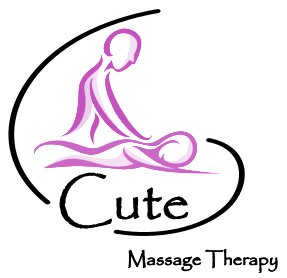Affordable prices
P is for posture, are you doing it right?
Cute Massage Therapy • 19 July 2021
It’s Monday again, and for many that means a trip back to work. Whether this involves sitting on a desk or doing manual work, we’d like to take the moment to talk about good posture - Especially considering how often we see people come in with backpain that stems from bad posture. So here’s a little recap to get you sitting, standing and working right.
....................................................
What is posture?
For the sake of clarification, posture - within the context of this blog - refers to the way in which someone holds their body whilst standing, sitting, or performing activities.
....................................................
What is good posture?
Good posture, which may also be referred to as neutral spine, is the act of positioning one’s body in a way that minimises strain on supporting muscles and ligaments. Within this blog we will specifically reference good posture in relation to standing, sitting and lifting.
Good posture whilst standing:
- Keep knees slightly bent in an "unlocked" or "soft" form (more details on this below).
- Keep feet a shoulder-width apart.
- Let arms naturally hang alongside your body.
- Keep shoulders pulled down and backwards, whilst you stand straight and tall.
Good posture whilst sitting:
- Keep hips pushed to the back of your chair, with your knees slightly lower than your hips.
- Keep wrists and forearms straight and parallel with the floor.
- Keep elbows by your side (ideally supported by an arm rest), forming an L shaped elbow join.
- Keep feet flat on the ground.
- If you have a screen - Keep it roughly an arm's length away with the top of the screen being at eye level.
- If you have a keyboard - Keep it directly in front of you, with a gap of 4 to 6 inches.
- If you have a mouse - Keep it as close to you as possible.
- If you use objects - Try avoid repeated stretching by positioning them in reachable places.
Good posture whilst lifting:
- Do NOT bend your back whilst lifting the load.
- Keep your feet spaced for stability, with one leg slightly forward (unless the load in on the ground).
- Apply a firm grip on the load, hugging it closely your body where possible.
- Keep the load as close to your waist as possible, with the heaviest side next to your body.
So me extra tips for lifting:
- When holding a load, avoid twisting and/or leaning sideways.
- Once in control of the load, look ahead at where your going and what's in front of you.
- If the load needs to be adjusted, place it safely on the ground first.
....................................................
What is bad posture?
Bad posture is simply the opposite of good posture, and refers act of positioning one's body in such a way that induces additional unnecessary strain on supporting muscles and ligaments. This in return can lead to a variety of problems. Here are some common bad postures to keep in mind on your journey to better posture.
Slouching:
Whilst it may be comfortable at first, over time slouching can place strain on your muscles, which in return can lead to increased tension and thus pain. To help correct slouching postures, you could try exercises to strengthen your core and buttocks, as well as back extensions.
- Plank
- Bridges
- Back extensions
Sticking your bottom out:
This refers to having your bottom stick out or having a pronounced curve in your lower back that leads one to adopt a Donald Duck like posture. Try to keep your body in perfect alignment whilst maintaining the spine’s natural curve. One helpful trick is to imagine your head being pulled upwards by a string. Alternatively, you could try exercises to strengthen your core and buttocks alongside some thigh and hip stretches.
- Plank
- Bridges
- Side-lying leg raises
- Hip flexor stretches
- Standing thigh stretches
Standing with a flat back:
Your spine has a natural curvature, so standing with your pelvis tucked in and lower back straight is no good for it and can even make it difficult to stand for extended periods of time. The posture commonly encouraged by prolonged periods of sitting down and muscle imbalances. To help alleviate a flat back, try exercises that strengthen your core, buttocks, neck and rear shoulders muscles, as well as back extensions.
- Plank
- Bridges
- Side-lying leg raises
- Chest stretches
- Seated rows or pull-ups
Leaning on one leg:
Like slouching, this may be a habit offering a false sense of comfort, whilst placing excessive pressure on one side of your lower back and hip. With time, this may cause muscular strain in the back and buttocks. A fairly simple solution is to get into the habit of standing with your weight evenly distributed on both your legs, something that of course will take a bit of practice and time (tips coming soon!). Alternatively, one could try these exercises:
- Plank
- Bridges
- Side-lying leg raises
Hunched back and “text neck”:
With “text neck” referring to the prolonged leaning forward of the head, typically whilst using a mobile phone. Over time, hunching your back can lead to a rounded upper back, which can lead to shoulder and upper back stiffness. Whilst text neck - as a result of force being applied onto the neck - can cause several problems such as headaches, back pain and muscle damage. Strengthening exercising for your neck, upper back, and rear shoulders, alongside neck posture drills and chest stretches are recommended.
- Lengthening your neck upwards whilst tucking in your chin
- Chest stretches
- Seated rows or pull-ups
Poking chin:
A poking chin, which is specifically common to office workers, can lead to neck and shoulder pains, headaches, and the feeling of having a heavy head. It typically forms as a result of sitting too low, sitting with a hushed back and/or using a screen that is placed too high. If you notice yourself doing this, a good initial approach would be to try identify what about your ergonomic positioning might be causing this. After improving your sitting habits, you could also try neck strengthening exercises.
- Lengthen your neck upwards whilst tucking in your chin
Rounded shoulders:
Refers to a resting position in which your shoulders are bent forward, giving the upper back a rounded form. Rounded shoulders can be caused by poor posture habits, muscle imbalances and excessively focusing on specific exercises whilst neglecting others. One way to spot if you have rounded shoulders is to stand straight and let your arms hang naturally by your side. If your knuckles face straight ahead, this can indicate tight chest and weak upper back, and thus rounded shoulders. Doing exercise to strengthen your core, upper back and chest muscles may help.
- Plank
- Bridges
- Chest stretches
- Seated rows or pull-ups
Phone cradling:
This refers to the art of holding a phone, via the application of pressure, between your ear and shoulder. As a result of strain on muscles and soft tissues of the neck, upper back and shoulders, this can lead to muscle imbalances between the sides of your neck. A simple remedy would be to get into the habit of holding your phone with your hands or using a hands-free device. Alternatively, one could try these exercises:
- Chest stretches
- Neck stretches
- Neck rotations
Locked knees:
Having your knees in an unlocked position is an important part of maintaining good posture. The same cannot be said about locked knees, which can lead to increased stress on your spine, as a result of exaggerating the curve on your lower back. You can test the state of your knees by standing (as you would normally) and then trying to further straighten your legs by pushing your knees back. If they cannot go back any further, then your knees are most likely locked. Unlock them by gently making a stance towards sitting down, you should feel a slight release shortly within your motion - when your knees become unlocked.
....................................................
Summary
So, you’ve reached the end (yay)! Now before you head off to adjust your chair and strengthen your buttocks, I’d just like to end this blog with a word of caution, and that is - always try to find the root cause. Whilst it’s good to exercise and strengthen your core, doing it alone will not completely free you of any posture induced problem you have. And the same can be said about getting massages, whilst we can definitely make you feel better in the short term, tackling the root of the problem is essential for long term health and happiness.
Now go furth and enjoy the rest of the week with good posture!
....................................................
P.S. I don’t think I’ve ever had to write buttocks so many times in one sitting, I just hope for both our sakes it was worth it. Also, more (shorter) blogs to come relating to posture throughout the week.

The word for today is… (drum roll please)… “ babies ”! Well, specifically, baby massage . Yes, massage isn’t just for us adults — babies can benefit greatly from it too. Unlike us, little ones can’t tell you when their back aches, or if their tummy feels a bit tight. That’s why baby massage takes a gentler, more mindful approach — one that helps your baby relax, develop, and feel secure while strengthening the precious bond you share.

Happy New Year! As we step into another January, it’s hard not to notice the energy of new beginnings all around us. The streets are suddenly filled with runners pounding the pavement, gym classes are packed to the brim, and for many, this is the time of year for setting ambitious fitness goals. If you’re one of those people who have laced up their trainers and hit the ground running (quite literally), well done! Your dedication is inspiring. But if you haven’t started your new year’s exercise regime — or if you don’t plan to — that’s okay too. You’re not alone. (Confession: I haven’t started either!) Remember, January is not a race. It’s a fresh start, but that doesn’t mean you need to do it all at once. No matter where you are on your fitness journey, there’s one thing we all need to keep in mind — recovery . Whether you’re a seasoned athlete or a casual mover, taking the time to recover is just as important as the activity itself.






